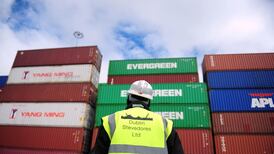There is a viable pathway to building a global energy sector with net-zero emissions by 2050, but "it is narrow and requires an unprecedented transformation of how energy is produced, transported and used globally", according to the International Energy Agency (IEA).
In a report issued on Wednesday, the IEA concludes, however, that climate pledges by governments to date – even if fully achieved – would fall well short of what is required to bring global energy-related CO2 emissions to net-zero by mid-century and give the world a chance of limiting the global temperature rise to 1.5 degrees – a key target of the Paris climate accord.
In a separate report, the UN Environment Programme (UNEP) found countries are currently planning to produce more than double the amount of coal, oil and gas consistent with limiting global warming to 1.5 degrees. It warned that government fossil fuel production plans this decade were “dangerously out of sync” with emissions cuts needed to comply with the Paris target.
The IEA sets out the first comprehensive study of how to transition to a net-zero energy system by 2050 "while ensuring stable and affordable energy supplies, providing universal energy access, and enabling robust economic growth". It is designed to inform high-level negotiations at the Cop26 global climate negotiations in Glasgow next month.
It sets out a cost effective and economically productive pathway, “resulting in a clean, dynamic and resilient energy economy dominated by renewables like solar and wind instead of fossil fuels”.
The report also examines uncertainties, such as the roles of bioenergy, carbon capture and behavioural changes, in required to reach net-zero emissions.
Priority actions
"Our roadmap shows the priority actions needed today to ensure the opportunity of net-zero emissions by 2050 – narrow but still achievable – is not lost. The scale and speed of the efforts demanded by this critical and formidable goal – our best chance of tackling climate change and limiting global warming to 1.5 degrees – make this perhaps the greatest challenge humankind has ever faced," said IEA director Fatih Birol.
He added: “The pathway to this brighter future brings a historic surge in clean energy investment that creates millions of new jobs and lifts global economic growth. Moving the world onto that pathway requires strong and credible policy actions from governments, underpinned by much greater international co-operation.”
The plan sets out over 400 milestones to guide the global journey to net-zero emissions. These include, “from today, no investment in new fossil fuel supply projects, and no further final investment decisions for new unabated coal plants”. By 2035, there are no sales of new internal combustion engine cars, and by 2040 the global electricity sector has reached net-zero emissions, it suggests.
In the near term “immediate and massive deployment of all available clean and efficient energy technologies, combined with a major global push to accelerate innovation”, is required.
The pathway calls for annual additions of solar photovoltaic output to reach 630 gigawatts by 2030, and for wind power to reach 390 gigawatts – four times the combined record level set in 2020.
A major worldwide push to increase energy efficiency is also an essential part of these efforts, resulting in the global rate of energy efficiency improvements averaging 4 per cent a year through 2030; about three times the average over the past two decades.
Readily available technologies
Most reductions in emissions up to 2030 in the net-zero pathway come from technologies readily available today, it underlines. But in 2050, almost half the reductions come from technologies that are currently only at the demonstration or prototype phase.
“This demands that governments quickly increase and reprioritise their spending on research and development – as well as on demonstrating and deploying clean energy technologies – putting them at the core of energy and climate policy.
“Progress in the areas of advanced batteries, electrolysers for hydrogen, and direct air capture and storage can be particularly impactful,” it says.
The 2021 Production Gap Report, produced by the UNEP and leading research institutes, predicts governments are collectively projecting an increase in oil and gas production over the next 20 years, and only a modest decrease in coal production. Total fossil fuel production is predicted to increase out to at least 2040, creating an ever-widening production gap.
"The devastating impacts of climate change are here for all to see. There is still time to limit long-term warming to 1.5 degrees, but this window of opportunity is rapidly closing," said UNEP director Inger Andersen.
“At Cop26 and beyond, the world’s governments must step up, taking rapid and immediate steps to close the fossil fuel production gap and ensure a just and equitable transition. This is what climate ambition looks like.”












